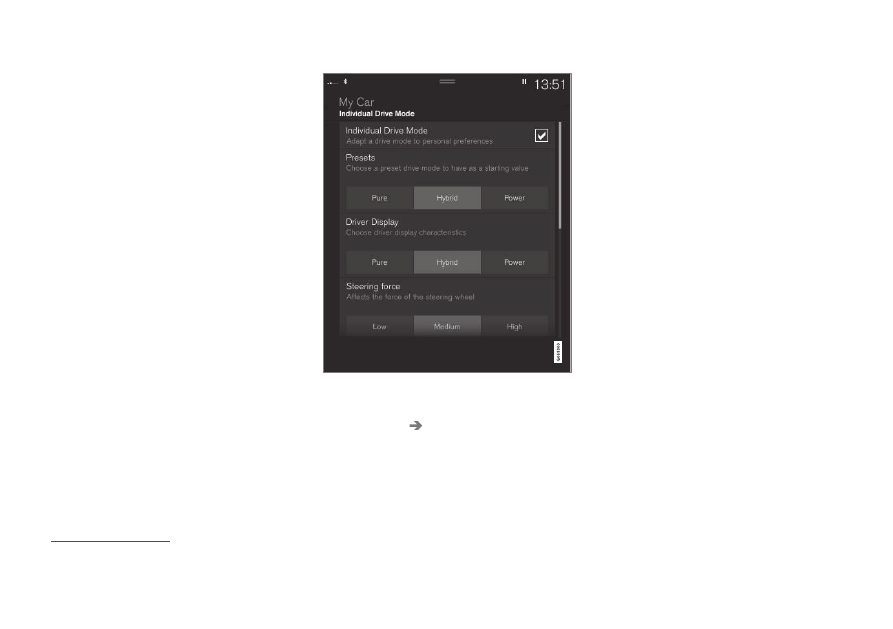Volvo XC60 Recharge Plug-in Hybrid (2021 year). Manual in english - page 26

||
STARTING AND DRIVING
* Option/accessory.
442
This drive mode is adapted for optimal per-
formance and response during acceleration. It
changes the throttle response, gear shifting
program and turbo boost system. Chassis set-
tings and steering and brake response are also
optimized. The
Power
drive mode is always
available regardless of the hybrid battery's
charge status.
Power
mode is also available in a
Polestar
Engineered
*
version.
Individual
•
Customizes drive mode to personal prefer-
ences.
Select one of the drive modes as a basis and
adjust the settings to achieve your preferred
driving characteristics. These settings will be
stored in your driver profile.
Individual drive mode is only available if it has
been activated in the center display.
Settings view
8
for Individual drive mode.
1. Tap
Settings
in the Top view.
2. Tap
My Car
Individual Drive Mode
and select
Individual Drive Mode
.
3. Under
Presets
, select one of the following
drive modes as a basis:
Pure
,
Hybrid
,
Power
or
Polestar Engineered
*
.
The following settings can be modified:
•
Driver Display
•
Steering Force
•
Powertrain Characteristics
•
Brake Characteristics
•
Suspension Control
•
ECO Climate
Using the electric or combustion
engine
An advanced control system determines the
distance that the vehicle can be driven on the
combustion engine, electric motor, or both at
the same time.
Its primary function is to use the motor/engine
and the current available in the hybrid battery
as efficiently as possible based on the charac-
teristics of the various drive modes and the
power output requested by the driver by
pressing the accelerator pedal.
In certain cases, temporary limitations in the
system or mandatory functions to help main-
tain a low overall emissions level may result in
greater use of the combustion engine.
8
The illustration is generic - details may vary according to vehicle model.